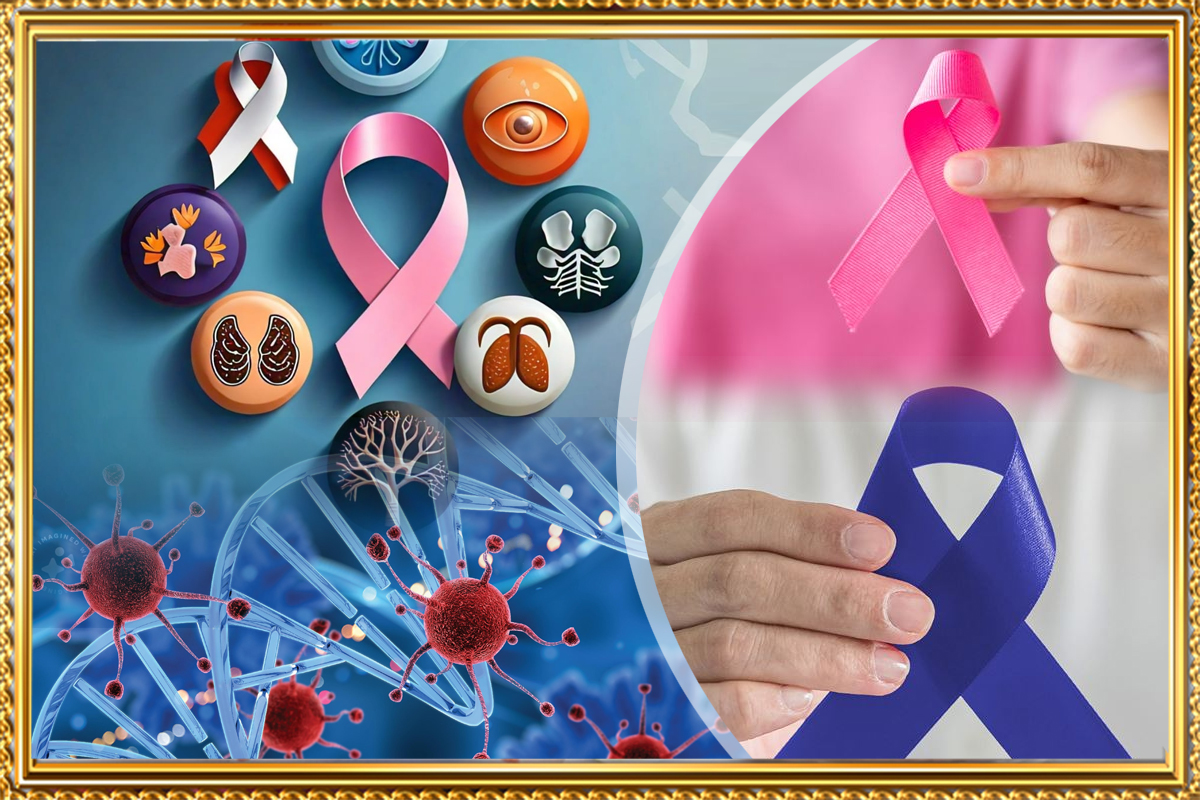- Home
- What Happens During a Stage 4 Cancer Diagnosis? A Step-by-Step Guide
What Happens During a Stage 4 Cancer Diagnosis? A Step-by-Step Guide

Many people wonder how stage 4 cancer can go unnoticed until it's too late. In this article, we discuss why advanced cancer is often detected late, the symptoms, diagnosis process, survival possibilities, and how patients cope with the condition. We also explore positive and negative aspects of stage 4 cancer and provide FAQs to help you understand it better.
Cancer is a life-altering diagnosis, but many individuals only discover they have stage 4 cancer when symptoms become severe. Stage 4 cancer, also known as metastatic cancer, occurs when the disease has spread to distant organs. This raises the question: How do people develop stage 4 cancer without noticing it earlier?
Symptoms of Stage 4 Cancer
Why Is Stage 4 Cancer Diagnosed Late?
Diagnosis of Stage 4 Cancer
Treatment Options for Stage 4 Cancer
Additional Symptoms of Stage 4 Cancer
Diagnostic Methods in Detail
Advances in Treatment for Stage 4 Cancer
Coping Mechanisms for Stage 4 Cancer
Positive Aspects of Stage 4 Cancer
Negative Aspects of Stage 4 Cancer
FAQs About Stage 4 Cancer
CONCLUSION
Symptoms of Stage 4 Cancer
While symptoms vary based on the type of cancer, common signs include:
- • Unexplained weight loss • Persistent fatigue • Chronic pain • Difficulty breathing or persistent cough • Frequent infections • Changes in bowel or bladder habits • Swelling or lumps in the body • Neurological symptoms like headaches, dizziness, or confusion

Why Is Stage 4 Cancer Diagnosed Late?
- 1. Lack of Early Symptoms Many cancers do not cause noticeable symptoms in their early stages. Some cancers, such as pancreatic or ovarian cancer, remain silent until they have progressed significantly. 2. Misinterpretation of Symptoms People may ignore or misinterpret early warning signs, attributing them to common conditions like fatigue, infections, or minor illnesses. 3. Limited Access to Medical Care In some cases, lack of access to healthcare, financial constraints, or fear of diagnosis prevents timely medical check-ups. 4. Aggressive Cancer Types Some cancers grow rapidly and spread before they cause noticeable symptoms. For example, lung cancer and melanoma can advance quickly. 5. Delayed Medical Evaluation Some patients avoid seeing a doctor until symptoms become unbearable, which can lead to a late-stage diagnosis.
Diagnosis of Stage 4 Cancer
Doctors use various diagnostic methods to confirm stage 4 cancer:
- • Imaging Tests: CT scans, MRIs, and PET scans help identify metastasis. • Biopsy: Tissue samples confirm the cancer type and stage. • Blood Tests: Markers like PSA (for prostate cancer) or CA-125 (for ovarian cancer) indicate cancer presence. • Genetic Testing: Determines mutations to guide personalized treatment plans.
Treatment Options for Stage 4 Cancer
Despite its severity, treatment options exist that can improve quality of life and extend survival:
- 1. Chemotherapy Targets cancer cells throughout the body but may cause side effects like nausea and fatigue. 2. Radiation Therapy Used to shrink tumors and alleviate pain in specific areas. 3. Immunotherapy Boosts the immune system to fight cancer cells, showing promising results in some cancers like melanoma and lung cancer. 4. Targeted Therapy Focuses on specific genetic mutations within cancer cells, minimizing damage to healthy cells. 5. Palliative Care Focuses on managing pain, improving comfort, and supporting emotional well-being.
Additional Symptoms of Stage 4 Cancer
- 1. Unexplained fever: Persistent fever may signal an infection or the body's response to cancer. 2. Jaundice: Yellowing of the skin or eyes, often seen in liver cancer or metastasis to the liver. 3. Difficulty swallowing: Cancer affecting the digestive system or throat may lead to problems with swallowing. 4. Changes in skin: New moles or growths, or changes to existing ones, may signal metastatic melanoma. 5. Bleeding or unusual discharge: Blood in stool, urine, or abnormal vaginal bleeding can point to cancer in the digestive, urinary, or reproductive systems.
Diagnostic Methods in Detail
- • Mammograms: For detecting breast cancer metastasis or identifying abnormalities. • Endoscopy: A procedure to visualize the digestive tract, helping identify cancers like colon or esophageal cancer. • Bone Scans: Used if there is concern about cancer spreading to the bones, which is common in breast and prostate cancers. • Ultrasound: Non-invasive technique used to identify tumors in various organs.
Advances in Treatment for Stage 4 Cancer
- 1. Gene Therapy: A cutting-edge approach that involves altering the genes inside cancer cells to stop their growth. 2. CAR-T Cell Therapy: A form of immunotherapy where a patient's T cells are modified to better fight cancer. 3. Cryoablation: A procedure that freezes and destroys cancerous tissue, often used in liver or kidney cancers. 4. Surgical Options: In some cases, surgery may be performed to remove metastases or shrink tumors, improving symptoms and prolonging life.
Coping Mechanisms for Stage 4 Cancer
- • Mental Health Support: It's important to address mental health alongside physical symptoms. Psychologists and support groups can help cope with the emotional challenges of advanced cancer. • Lifestyle Modifications: Eating a nutritious diet, staying active (within the individual's capabilities), and practicing mindfulness or relaxation techniques can improve overall well-being. • Spiritual and Social Support: Many patients find comfort in spiritual practices or relying on close family and friends to help through challenging times.
Positive Aspects of Stage 4 Cancer
- • Advanced Treatments: Modern medical advancements have improved survival rates. • Support Systems: Many organizations provide emotional and financial support. • Personal Growth: Patients often experience deeper relationships and greater appreciation for life. • Medical Trials: Access to experimental treatments through clinical trials.
Negative Aspects of Stage 4 Cancer
- • Uncertain Prognosis: Survival rates vary widely depending on the type of cancer and individual factors. • Side Effects: Treatments can cause severe side effects. • Emotional Impact: Anxiety, depression, and fear are common. • Financial Burden: High treatment costs can be a challenge for many families.
FAQs About Stage 4 Cancer
- 1. Is stage 4 cancer always terminal? Not always. Some patients achieve remission with treatment, while others live years managing the disease. 2. Can chemotherapy cure stage 4 cancer? While chemotherapy may not always cure stage 4 cancer, it can help control its spread and improve quality of life. 3. Is pain a common symptom of stage 4 cancer? Pain depends on the type and location of cancer. Some people experience severe pain, while others may have minimal discomfort. 4. How long can someone live with stage 4 cancer? Life expectancy varies based on the type of cancer, treatments, and overall health. Some patients live months, while others survive for years. 5. Are there any survivors of stage 4 cancer? Yes, some individuals have survived stage 4 cancer, especially with advancements in immunotherapy and targeted treatments.
Conclusion
A stage 4 cancer diagnosis can be overwhelming, but it is not always a death sentence. Early detection, advanced treatments, and strong support systems can improve survival and quality of life. Research, hope, and medical advancements continue to offer better outcomes for many patients worldwide.

If you or a loved one is facing stage 4 cancer, remember that support is available. Stay informed, stay hopeful, and seek professional medical advice to explore your options.
















Post a comment